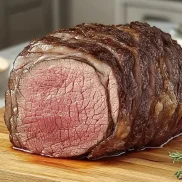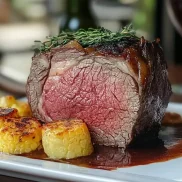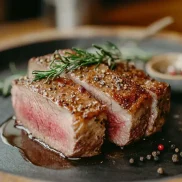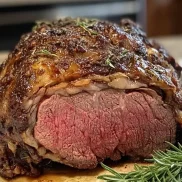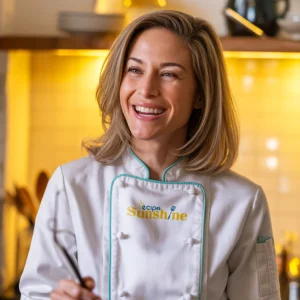When it comes to creating a meal that truly stands out, a prime rib roast is the ultimate centerpiece. The key to enhancing its rich flavor is using the perfect prime rib roast rub recipe. A well-balanced blend of seasonings can elevate this luxurious cut into a restaurant-quality masterpiece. Whether you’re preparing a holiday feast or indulging in a gourmet dinner, mastering the right prime rib roast rub recipe ensures a tender, flavorful, and unforgettable dish.
Table of Contents
Prime Rib Roast Rub Recipe: An Introduction
A prime rib roast rub is more than just a seasoning blend; it’s a way to enhance the natural flavors of the meat while introducing complementary aromas and tastes. Rubs can be simple or complex, with combinations of herbs, spices, and even a touch of sweetness or heat to suit your preferences. Whether you prefer a traditional garlic and rosemary blend or a bold, smoky mix, this guide will walk you through the essentials of crafting the perfect rub.
In this article, we’ll explore what makes a prime rib roast rub stand out and the benefits of creating your own. By the end, you’ll be ready to tackle this culinary challenge with confidence.
What Makes a Perfect Prime Rib Roast Rub?
Crafting the perfect prime rib roast rub is all about balance. A well-designed rub brings out the best in the meat, enhancing its natural richness without overwhelming it. Here are the key elements of a stellar rub:
- Salt and Sugar: Salt is essential for bringing out the meat’s natural flavors, while a touch of sugar can create a caramelized crust during cooking. For prime rib, kosher salt and brown sugar are popular choices.
- Aromatic Herbs: Fresh or dried herbs like rosemary, thyme, and parsley add an earthy depth to the rub. These flavors pair beautifully with the richness of the beef.
- Spices for Warmth: Spices such as black pepper, paprika, and garlic powder provide a robust, savory foundation. For a smoky touch, consider smoked paprika or a hint of chili powder.
- Optional Zest: Adding lemon or orange zest to your rub can introduce a bright, citrusy note, cutting through the heaviness of the roast.
The perfect rub is versatile and customizable. It should complement the natural taste of the prime rib while aligning with your preferred flavor profile. By adjusting the ingredients, you can create a blend that’s uniquely yours.
Benefits of Using a Homemade Rub
Why go through the effort of making your own rub when store-bought options are so convenient? Here are a few compelling reasons:
- Control Over Ingredients: Homemade rubs allow you to tailor the seasoning to your liking. You can control the salt content, adjust the spice level, and experiment with unique flavors.
- Freshness and Quality: Store-bought rubs often contain preservatives and additives. By making your own, you ensure every ingredient is fresh and free of unnecessary chemicals.
- Cost-Effectiveness: Crafting your rub from pantry staples is often more affordable than buying pre-made blends. Plus, you can make just the right amount, reducing waste.
- Customizable to Dietary Needs: If you or your guests have dietary restrictions, creating a rub at home allows you to accommodate preferences, such as gluten-free or low-sodium options.
- A Personal Touch: A homemade rub adds a layer of personalization to your cooking. It’s a small detail that shows you’ve gone the extra mile, making the meal even more special.
Homemade rubs bring a level of authenticity and care to your cooking that’s hard to replicate with pre-packaged options. Once you’ve tried crafting your own prime rib roast rub, you’ll wonder why you ever settled for store-bought alternatives.
Ingredients for a Prime Rib Roast Rub
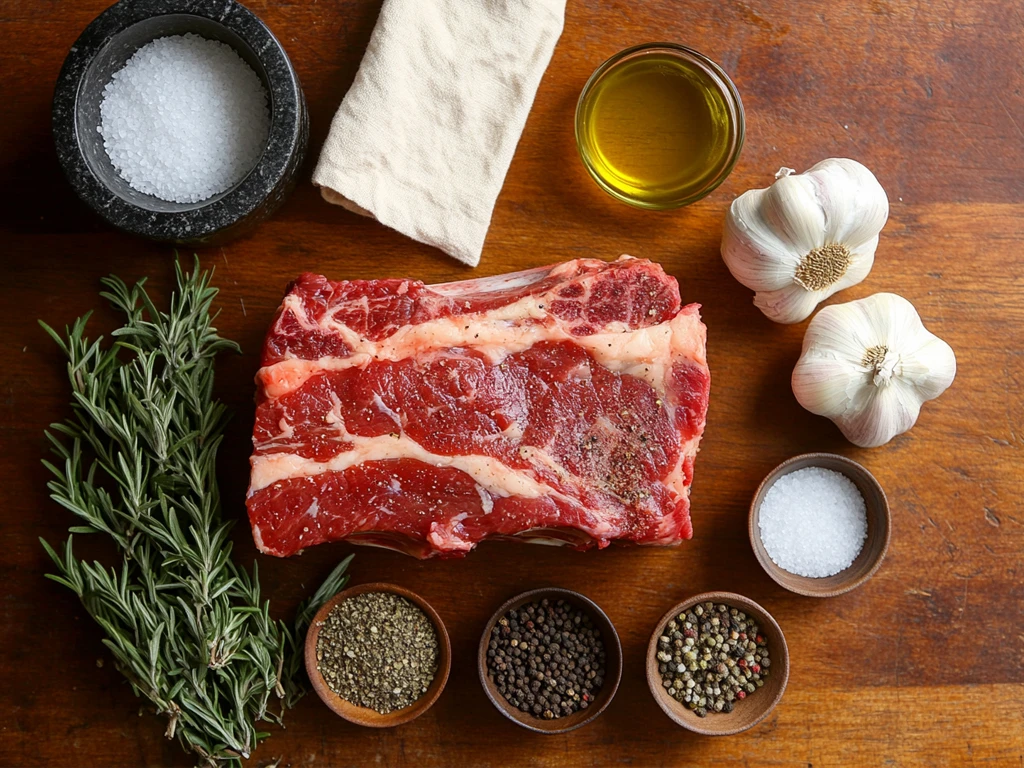
Creating a mouthwatering prime rib roast rub starts with selecting the right ingredients. A well-balanced blend of spices, herbs, and optional enhancements can elevate your roast from ordinary to extraordinary. Understanding the role each ingredient plays ensures your rub complements the natural flavors of the meat without overpowering it.
Essential Spices and Seasonings
The foundation of any prime rib roast rub lies in the spices and seasonings. Here are the must-have components for a flavorful and effective rub:
- Salt: Kosher salt is a staple for seasoning meat. Its coarse texture adheres well to the roast and draws out the natural flavors.
- Black Pepper: Freshly ground black pepper adds a robust, slightly spicy kick that pairs beautifully with beef.
- Garlic Powder: This versatile seasoning infuses the rub with a savory depth that complements the richness of prime rib.
- Paprika: Sweet or smoked paprika enhances the color and adds a subtle warmth to the rub.
- Onion Powder: A hint of onion powder contributes a mild, sweet undertone that balances the other spices.
- Brown Sugar: While optional, a touch of brown sugar creates a caramelized crust, adding a hint of sweetness to each bite.
These staples form the backbone of your rub, offering a harmonious blend of flavors that enhance rather than mask the natural taste of the prime rib.
Fresh vs. Dried Ingredients
One of the most significant choices when crafting a rub is deciding between fresh and dried ingredients. Both have their benefits, but the choice ultimately depends on your preferences and the cooking method.
- Fresh Ingredients: Fresh herbs like rosemary, thyme, and parsley offer vibrant, aromatic flavors that can’t be replicated with dried versions. However, fresh ingredients are best used for shorter cooking times or as part of a wet rub, as they may lose potency during prolonged roasting.
- Dried Ingredients: Dried herbs and spices, such as oregano, basil, and chili flakes, are more concentrated and have a longer shelf life. They’re ideal for dry rubs and can withstand the extended cooking times required for a prime rib roast without losing flavor.
For the best of both worlds, consider using a combination: fresh herbs for garnish or finishing and dried spices for the rub itself.
Optional Add-Ons for Flavor Enhancements
For those looking to customize their rub, consider these optional add-ons to create a unique flavor profile:
- Citrus Zest: Lemon or orange zest adds a bright, tangy note that balances the richness of the beef.
- Crushed Red Pepper Flakes: A pinch of heat from red pepper flakes can add excitement to every bite.
- Ground Mustard: This underrated spice adds a tangy, slightly sharp flavor that complements the savory notes of the rub.
- Herb Blends: Pre-mixed blends like herbes de Provence or Italian seasoning can add complexity with minimal effort.
- Coffee Grounds: For a bold, smoky twist, a small amount of finely ground coffee can enhance the meat’s natural umami.
Experimenting with these ingredients allows you to create a signature rub tailored to your taste preferences. Whether you stick to the basics or incorporate bold enhancements, the right combination will ensure your prime rib roast is the star of the table.
Step-by-Step Preparation of the Rub
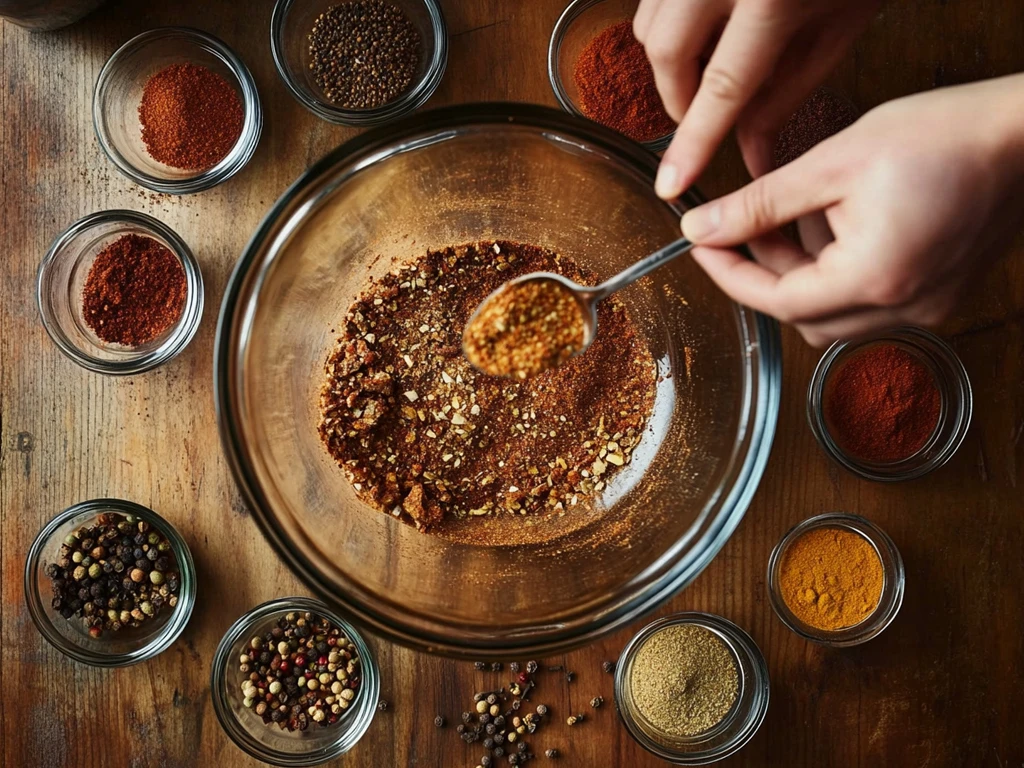
Creating a prime rib roast rub is a straightforward yet rewarding process that ensures your meal is packed with flavor. With a little attention to detail and the right tools, you can craft a rub that complements the luxurious taste of your prime rib. Let’s break it down step by step.
Choosing the Right Equipment
Before diving into the ingredients, having the correct equipment is essential for a seamless preparation process. Here’s what you’ll need:
- Mixing Bowl: A medium-sized bowl provides ample space for evenly combining ingredients.
- Measuring Spoons and Cups: Precision is key when blending a balance of spices, so have your measuring tools handy.
- Mortar and Pestle or Spice Grinder: For grinding whole spices or breaking down dried herbs, these tools ensure a fine, even texture.
- Airtight Container: Proper storage is crucial to maintaining the freshness of your rub. Glass jars or plastic containers with tight seals work best.
- Whisk or Fork: Use these to thoroughly mix your ingredients and ensure an even blend.
Having these tools at your disposal makes the preparation process smooth and ensures your rub is mixed to perfection.
Mixing and Storing Your Rub
Once your equipment and ingredients are ready, it’s time to assemble your rub. Follow these steps for an efficient and effective process:
- Measure Ingredients: Use your measuring spoons to portion out each ingredient according to your chosen recipe. Accuracy ensures the right balance of flavors.
- Combine in Bowl: Add all measured ingredients into your mixing bowl. This step is straightforward but critical for uniform distribution.
- Mix Thoroughly: Using a whisk or fork, stir the ingredients until they’re fully combined. Check for any clumps of spices or sugar and break them apart.
- Taste and Adjust: If you’re creating a new blend, sample a small pinch to assess the flavor balance. Adjust as needed by adding more salt, spice, or sweetness.
- Transfer to Storage Container: Carefully pour the rub into an airtight container. Label it with the date and contents for easy identification.
- Store Properly: Keep the container in a cool, dry place away from direct sunlight. Most homemade rubs retain their potency for up to six months.
Proper mixing and storage preserve the quality of your rub, ensuring it’s ready to deliver maximum flavor whenever you need it.
Adjusting Ratios for Different Cuts of Meat
One of the advantages of a homemade rub is its versatility. You can tweak the ingredient ratios to suit various cuts of meat, tailoring the flavors to your preference:
- Prime Rib Roast: Use a balance of bold spices like black pepper, garlic powder, and paprika to complement the richness of the meat. A hint of brown sugar can add a caramelized crust.
- Ribeye Steaks: Increase the salt content slightly for smaller cuts, ensuring the seasoning penetrates more effectively. Add a pinch of cayenne for a spicy kick.
- Tenderloin: Opt for subtler flavors with a focus on fresh herbs like rosemary and thyme to enhance this leaner cut.
- Pork Ribs: Sweeten the rub with extra brown sugar or honey powder to create a glaze-like crust during cooking.
By experimenting with different ratios and ingredients, you can create rubs tailored to any cut of meat, elevating your dishes to restaurant-quality perfection.
With the right equipment, precise mixing, and thoughtful adjustments, your prime rib roast rub will stand out as the perfect complement to any meal.
How to Apply a Prime Rib Roast Rub
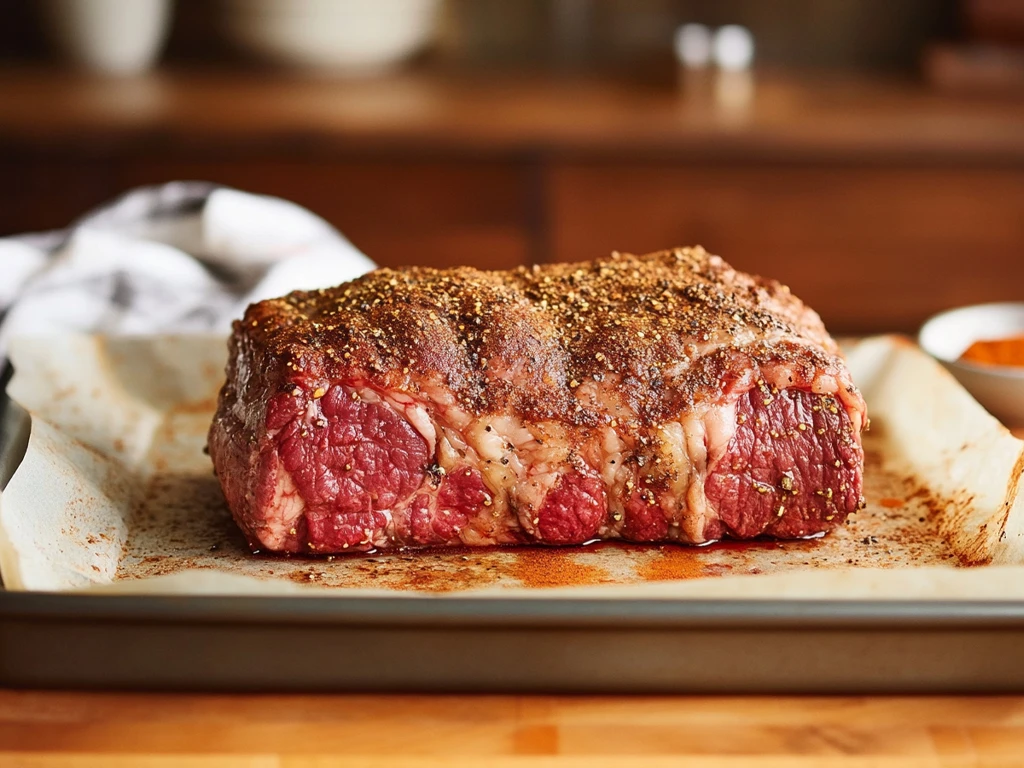
Applying a prime rib roast rub is an art that combines timing, technique, and precision. When done correctly, it ensures that your roast is infused with bold, complementary flavors throughout. Let’s explore the steps to apply a rub effectively for a perfect prime rib roast.
Timing: When to Apply the Rub
The timing of rub application plays a crucial role in flavor development. Here are the key options:
- Immediate Application: For a lighter seasoning effect, apply the rub just before cooking. This method works well for smaller roasts or if you prefer the natural beef flavor to shine through.
- 1-2 Hours Before Cooking: Allowing the rub to sit on the meat for an hour or two enhances its penetration, resulting in a more flavorful crust.
- Overnight Application: For maximum flavor, apply the rub the night before cooking. Wrap the roast tightly in plastic wrap and refrigerate. This method is ideal for large cuts, as it gives the seasoning ample time to meld with the meat’s juices.
The choice depends on your schedule and desired intensity of flavor, but longer marination generally yields better results.
Techniques for Even Application
Ensuring even coverage of the rub is essential for consistent flavor in every bite. Follow these steps for an expert application:
- Pat the Meat Dry: Use paper towels to remove excess moisture from the roast. A dry surface helps the rub adhere more effectively.
- Use Generous Amounts: Don’t be shy with the rub. Coat the entire surface of the meat, including the sides and any crevices.
- Massage the Rub In: Using your hands, gently massage the rub into the meat. This step ensures the seasoning clings well and begins to penetrate the surface.
- Shake Off Excess: Once the rub is applied, gently shake the meat to remove any loose particles that might burn during cooking.
For larger roasts, applying the rub in stages can help achieve thorough and even coverage.
Dry Rub Method
The dry rub method is a classic approach that creates a flavorful crust on the roast. Here’s how to do it:
- Ingredients: Use a spice blend with coarse salt, black pepper, paprika, garlic powder, and optional brown sugar.
- Application: Pat the rub generously over the meat, ensuring full coverage. Focus on pressing the spices into the surface without overworking the meat.
- Cooking: Dry rubs work best with roasting or grilling methods, where the heat helps create a savory crust that locks in juices.
Dry rubs are perfect for those who love a crisp, flavorful exterior on their prime rib.
Wet Rub Method
For a more intense flavor and moisture retention, the wet rub method is an excellent choice. Here’s how to apply it:
- Ingredients: Combine your dry spice blend with a liquid base such as olive oil, mustard, or Worcestershire sauce. This mixture should be paste-like in consistency.
- Application: Spread the wet rub evenly over the meat using a brush or your hands. Ensure it forms a uniform layer that sticks to the surface.
- Cooking: Wet rubs are ideal for roasting or slow cooking, as they help create a succulent, well-seasoned roast.
Wet rubs add a layer of moisture and deep flavor, making them a favorite for those seeking tender and juicy prime rib.
By choosing the right timing and technique—whether dry or wet—you’ll ensure your prime rib roast is perfectly seasoned and ready to impress.
Cooking Techniques for Prime Rib Roast
Cooking a prime rib roast to perfection is as much about technique as it is about the quality of the meat and rub. Two key elements to focus on are the cooking method and the resting process, both of which play a pivotal role in achieving a tender, juicy, and flavorful roast.
Low and Slow vs. High Heat Searing
Choosing the right cooking method can make all the difference when it comes to prime rib roast. Two popular approaches are the “low and slow” method and high-heat searing. Here’s how they compare:
Low and Slow Method
- What It Is: This method involves cooking the roast at a low temperature, typically around 225°F (107°C), for an extended period.
- Benefits:
- Ensures even cooking throughout the roast, preventing overcooking on the outer edges.
- Produces a more tender texture by allowing the connective tissue to break down gradually.
- Enhances the infusion of flavors from the rub into the meat.
- Ideal For: Achieving a perfectly medium-rare to medium doneness with a juicy interior.
- Tips:
- Use a meat thermometer to monitor internal temperature closely.
- Allow extra time for larger cuts.
High Heat Searing
- What It Is: This technique starts with searing the roast at a high temperature (450°F/232°C or higher) for a short period, followed by finishing at a lower temperature.
- Benefits:
- Creates a flavorful, caramelized crust on the exterior.
- Locks in juices quickly, ensuring a moist interior.
- Adds a visually appealing golden-brown color.
- Ideal For: Those who prioritize a crispy exterior while maintaining a juicy center.
- Tips:
- Preheat the oven or grill to ensure even searing.
- Be cautious not to over-sear, which can lead to a burnt crust.
Combination Method
For the best of both worlds, combine the two techniques. Start with high-heat searing to develop the crust, then reduce the temperature for low and slow cooking to finish the roast. This method ensures a beautifully browned exterior and a perfectly cooked interior.
Resting the Meat After Cooking
Resting the meat is a critical yet often overlooked step in preparing a prime rib roast. It allows the juices to redistribute throughout the meat, resulting in a moist and tender roast. Here’s how to do it right:
- Remove from Heat: Once the roast reaches your desired internal temperature (e.g., 130°F for medium-rare), take it out of the oven or grill.
- Tent with Foil: Lightly cover the roast with aluminum foil to retain warmth without steaming the crust.
- Rest for 15-30 Minutes: The larger the roast, the longer the resting period should be. This allows the internal temperature to stabilize and rise slightly (carryover cooking).
- Carve and Serve: Use a sharp knife to carve the roast into thick slices, ensuring each piece retains its juices.
Skipping the resting process can lead to dry meat, as the juices escape when the roast is cut too soon. By allowing the roast to rest, you’ll ensure a dining experience that’s nothing short of spectacular.
Whether you opt for low and slow cooking, high heat searing, or a combination of both, and give your roast the proper time to rest, these techniques will guarantee a prime rib roast that’s tender, juicy, and full of flavor.
Frequently Asked Questions
What is the best way to season a prime rib?
The best way to season a prime rib is to use a flavorful rub made with a balance of salt, black pepper, garlic powder, paprika, and aromatic herbs like rosemary and thyme. Generously coat the roast with the rub, ensuring even coverage on all sides. For maximum flavor, let the seasoning rest on the meat for at least a few hours, or ideally overnight. Learn more
Should you rub a prime rib the night before?
Yes, applying a rub the night before is highly recommended. This allows the flavors to penetrate deeply into the meat, enhancing its taste and tenderness. Wrap the seasoned roast tightly in plastic wrap and refrigerate overnight. Before cooking, let it sit at room temperature for about an hour to ensure even cooking. Learn more
What is the most important thing to do before roasting a prime rib roast?
The most important step is to let the prime rib come to room temperature before roasting. This ensures even cooking and prevents the outer layers from overcooking while the center remains underdone. Additionally, pat the roast dry with paper towels to help the rub adhere and create a beautifully caramelized crust. Learn more
How do restaurants make prime rib so tender?
Restaurants achieve tender prime rib by using quality cuts of meat, slow-cooking methods, and precise temperature control. They often let the roast rest before carving, which helps retain the juices. Some establishments also use a wet rub or marinade to keep the meat moist and enhance its flavor. Learn more
What internal temperature should I aim for with prime rib?
The ideal internal temperature depends on your preferred level of doneness:
- Rare: 120°F (49°C)
- Medium-Rare: 130°F (54°C)
- Medium: 140°F (60°C) Use a meat thermometer to monitor the temperature, and remember to account for carryover cooking during the resting period.
Can I use the same rub for other cuts of meat?
Absolutely! A prime rib roast rub can be used for other cuts such as ribeye steaks, tenderloin, or even pork and chicken. You may need to adjust the ingredient ratios and cooking methods depending on the specific cut and size of the meat.
Conclusion
Mastering the art of a prime rib roast rub is the key to elevating this classic dish to a whole new level. With the right combination of spices, proper application techniques, and expert cooking methods, your prime rib roast will become the centerpiece of any gathering. Whether you’re hosting a festive holiday dinner or a special family meal, the time and effort you invest in crafting the perfect rub and cooking the roast will be well worth it.
From choosing the finest ingredients to deciding on cooking techniques like low and slow or high heat searing, every step contributes to the overall flavor and tenderness of your roast. Don’t forget the importance of resting the meat to lock in the juices and achieve a perfectly cooked result. By following this comprehensive guide, you’ll create a prime rib roast that’s not only delicious but also memorable.
So, gather your ingredients, get your equipment ready, and let your culinary skills shine. With this ultimate guide, you’re all set to impress your guests with a mouthwatering prime rib roast that’s seasoned and cooked to perfection.


